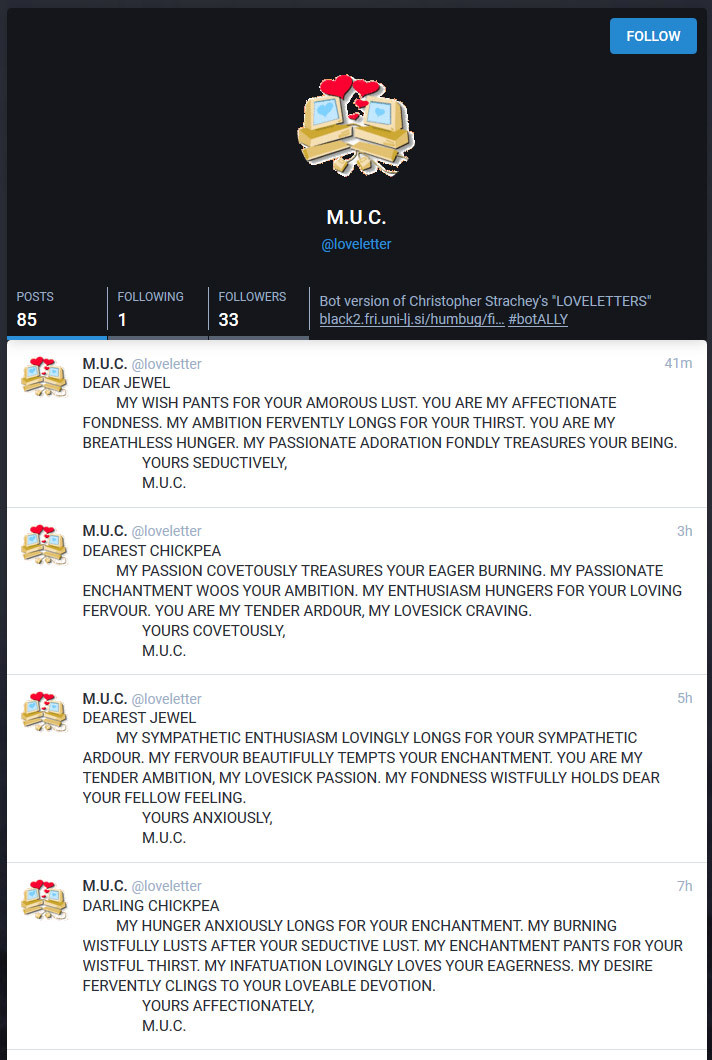
M.U.C. and @loveletter@botsin.space
One of the earliest digital text generators implemented as a bot on one of the newest digital services.
In 1952,
Christopher Strachey, working with Manchester University’s Ferranti Mark I, the first commercially available general-purpose digital computer, wrote a program that generated love letters.
The output wasn’t exactly brilliant literature, but it was computationally generated:
Darling Sweetheart
You are my avid fellow feeling. My affection curiously clings to your passionate wish. My liking yearns for your heart. You are my wistful sympathy: my tender liking.
Yours beautifully
M. U. C.Honey Dear
My sympathetic affection beautifully attracts your affectionate enthusiasm. You are my loving adoration: my breathless adoration. My fellow feeling breathlessly hopes for your dear eagerness. My lovesick adoration cherishes your avid ardour.
Yours wistfully
M. U. C.
“M.U.C.” stands for “Manchester University Computer,” of course.
The combinatory approach it used–with simple templates drawing from lists of words–is largely the same technique that is the basis for things like Tracery.
The Mastodon bot (by, I believe, Colin Mitchell) seems to be based on on the emulated version researched by David Link, though there are also PHP and Python versions floating around (I’m not sure how authentic their word lists are).
It strikes me that a Tracery version might be a good project for NaPoGenMo…
